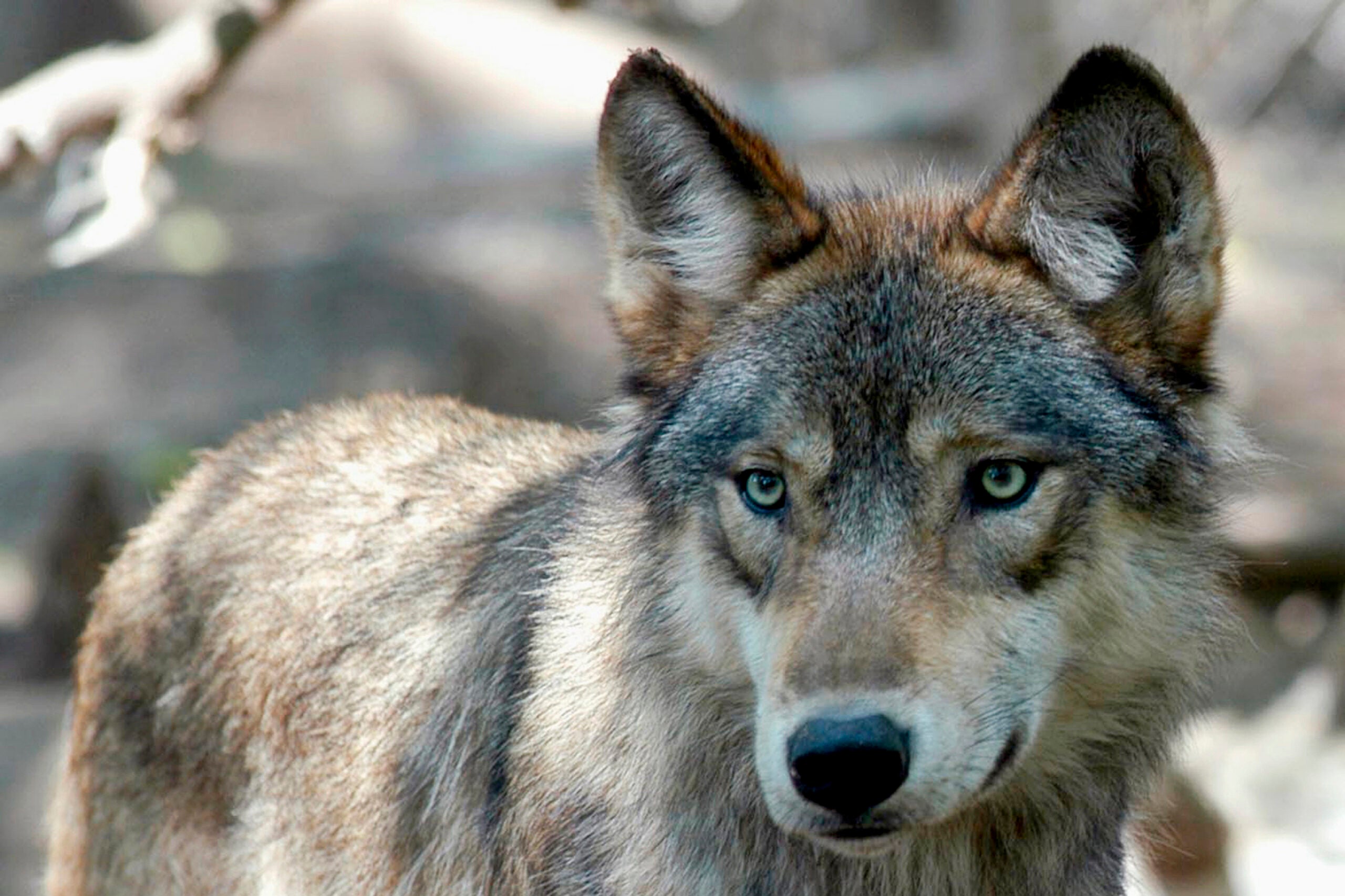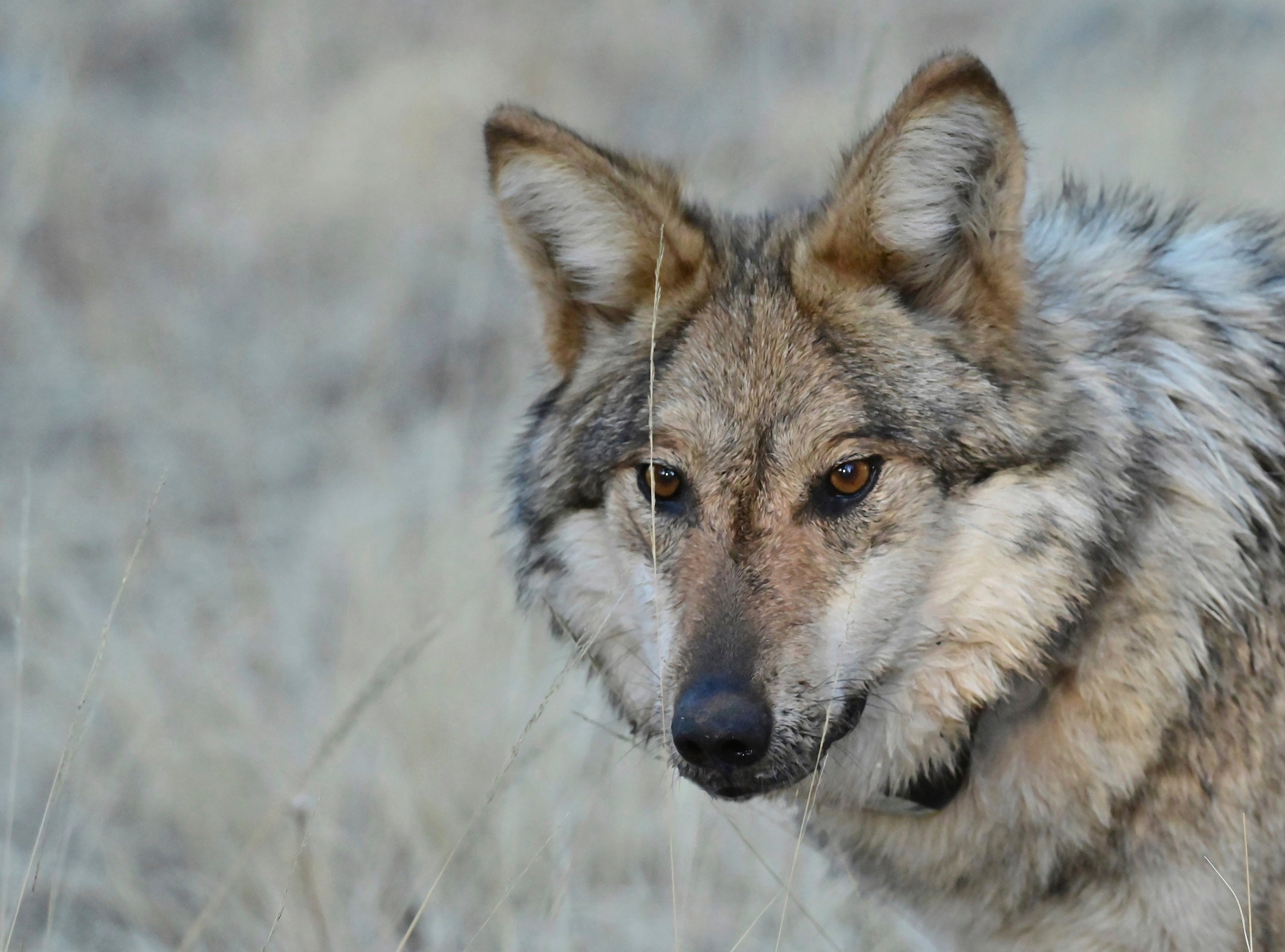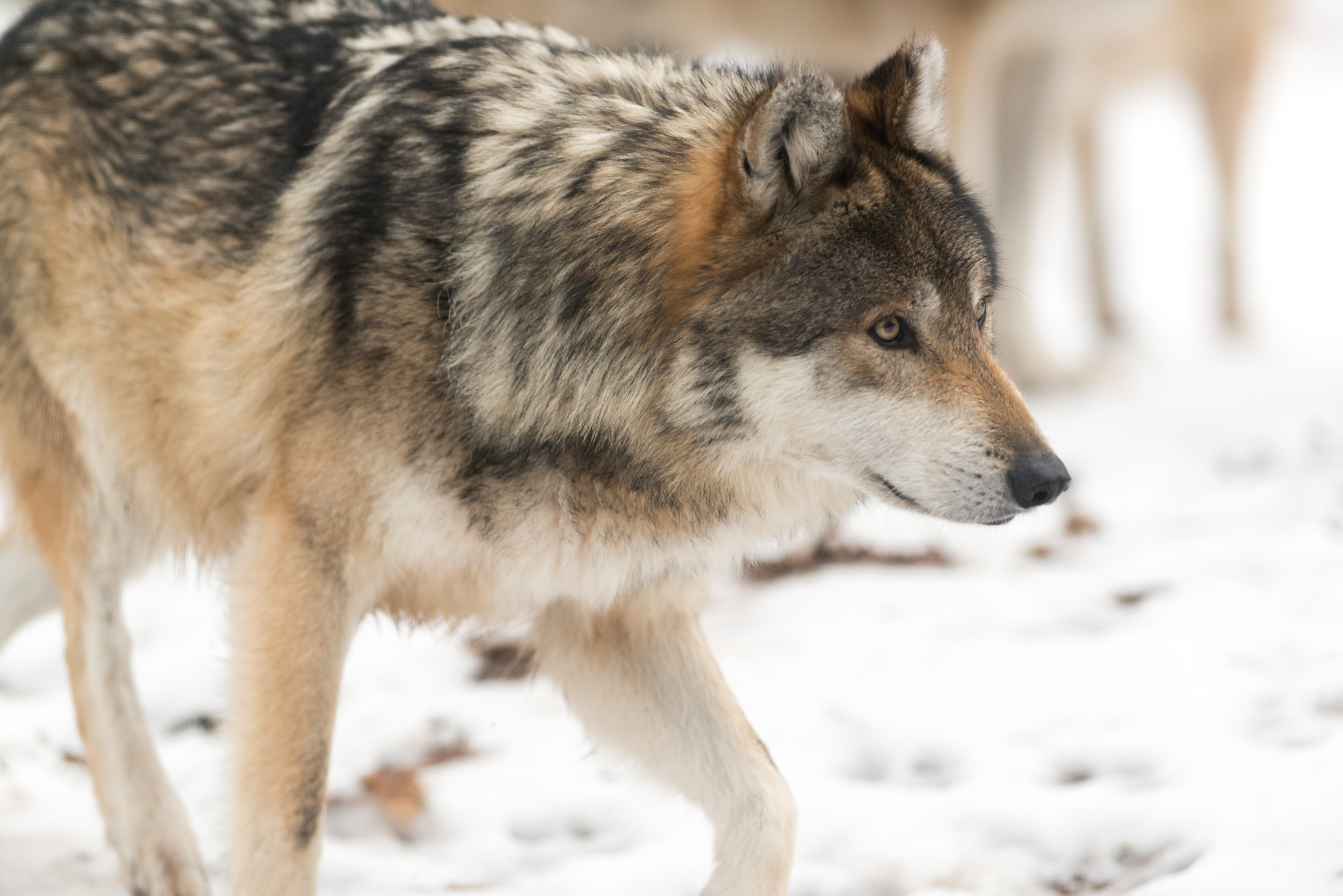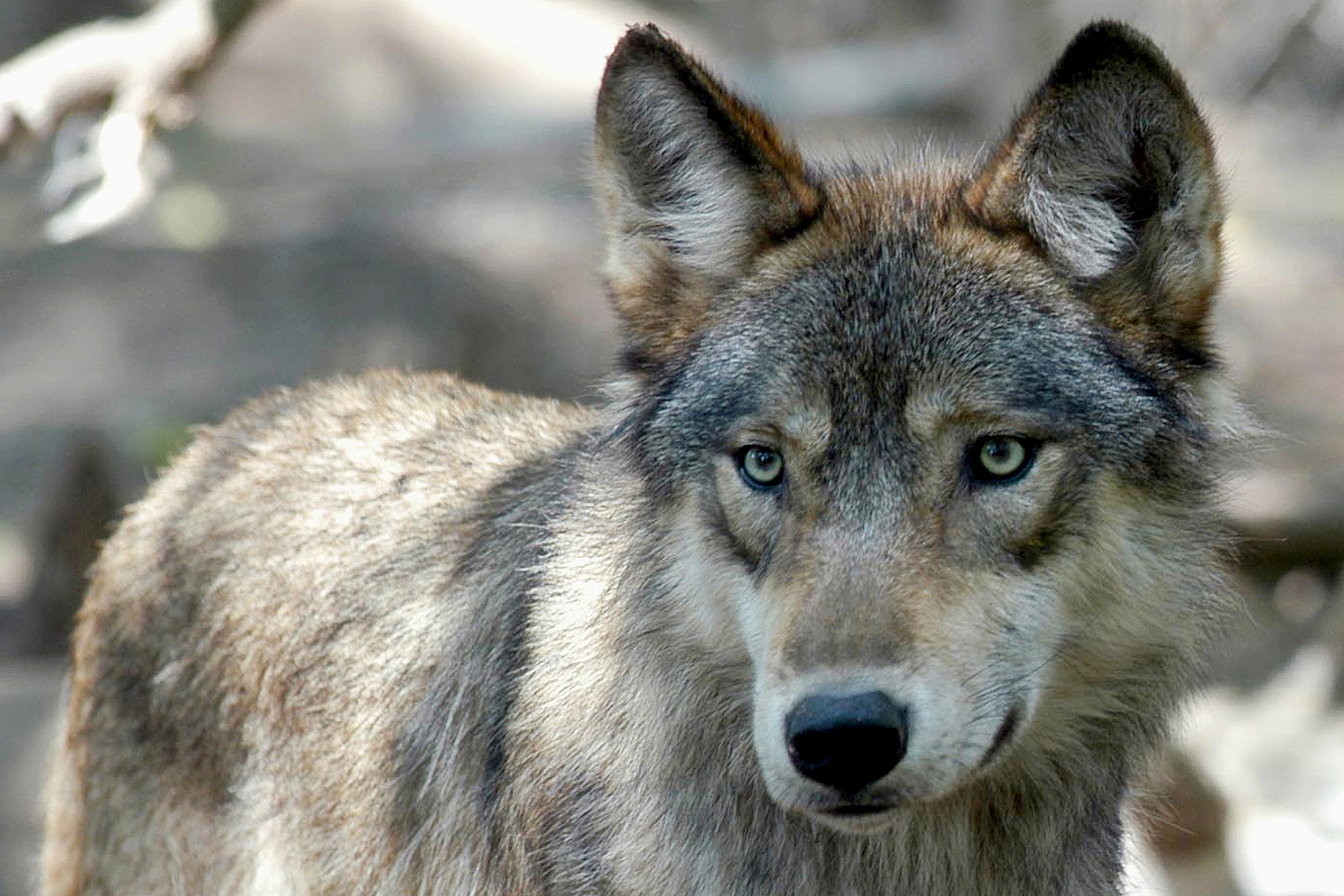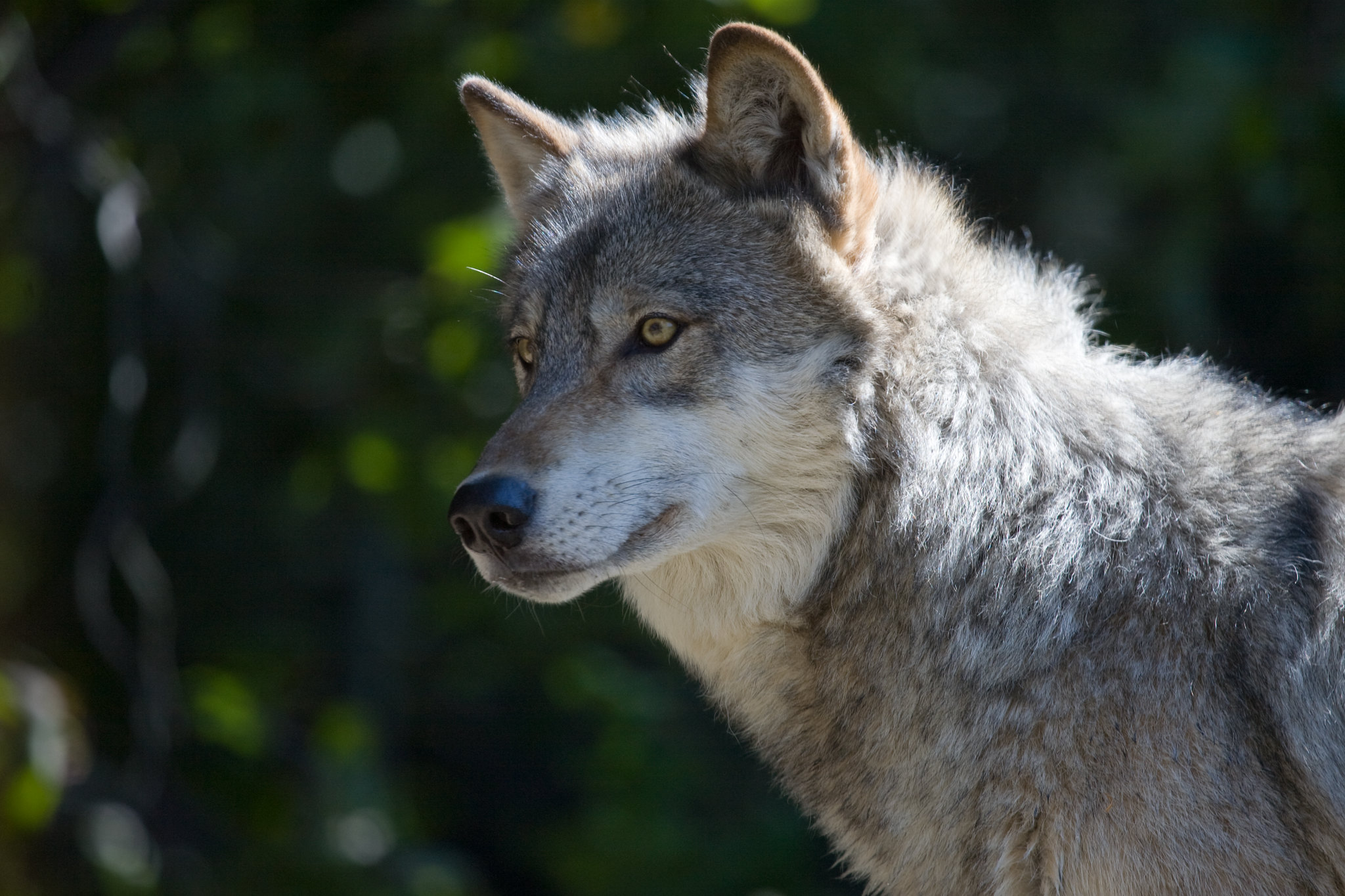Now that most gray wolves are delisted, some Wisconsin landowners and farmers are seeking to resolve conflicts by killing wolves on their property.
The Trump administration removed the wolf from the endangered species list in early January after announcing its intention to delist the animal last fall. When federal protections existed, federal and state wildlife managers were limited to using nonlethal measures to manage problem wolves that preyed on livestock or pets.
“But, now that wolves are delisted and we have state management authority, it gives us the ability to implement lethal controls,” said Brad Koele, wildlife damage specialist with the Wisconsin Department of Natural Resources.
News with a little more humanity
WPR’s “Wisconsin Today” newsletter keeps you connected to the state you love without feeling overwhelmed. No paywall. No agenda. No corporate filter.
The change means landowners can apply for wolf removal permits or work with U.S. Department of Agriculture-Wildlife Services to trap and remove problem wolves. Landowners are also allowed to shoot wolves in the act of biting, wounding or attacking their animals. Shootings must be reported to the DNR within 24 hours.
There have been no reports of shootings this year. But, USDA-Wildlife Services has trapped wolves on two farms this year that had chronic wolf problems, resulting in the removal of one wolf in Douglas County. So far, there have been 18 landowners who have applied for a permit to remove wolves.
“One wolf has been removed under one of those landowner permits,” said Koele. “That was up in Bayfield County.”
The state has previously awarded landowner permits to remove wolves when the animal was delisted in 2011. According to figures provided by the DNR, the agency issued 129 permits in 2012, 60 permits in 2013 and 47 permits in 2014 prior to the wolf’s relisting as an endangered species. A total of 34 wolves were killed by landowners during the three-year period. USDA-Wildlife Services removed 138 wolves during the same time span, and four shootings of active wolf attacks were reported.
Farmers and hunters in Wisconsin have supported removing federal protections for the animal as their population has grown. The number of wolves in Wisconsin grew from just 25 animals in 1980 to 1,195 wolves prior to the February wolf hunt, according to the DNR.
The state’s first hunt in six years drew sharp criticism from tribes and environmental groups who say the harvest was not based on good science. Hunters have argued they play a role in managing the population, harvesting nearly double the state-allotted quota at 216 wolves.
As the wolf population has grown, farmers and hunters have reported increasing conflicts with wolves. Since 2017, the number of wolf depredation complaints has grown from 111 to 148 complaints in 2020. The number of verified attacks increased from 82 in 2019 to 98 confirmed depredations last year. That’s the highest number of confirmed wolf attacks since 2016 when officials verified 100 depredations out of 165 complaints.
Brady Zuck runs Zuck Cattle Company near Ladysmith, which has a herd of a couple hundred beef cows. Zuck, who is also president-elect of the Wisconsin Cattlemen’s Association, said his family’s operation has been lucky enough to avoid wolf attacks. But, he said the animals are a real threat to farmers in central and northern Wisconsin.
“You definitely have the direct impact of losing cows that would eventually be sold,” said Zuck.
He added that nonlethal measures, such as flagging fence lines or using lights, have provided just a temporary fix for some producers. DNR data show the state has made a total of nearly $2.9 million in wolf damage payments since 1985.
Zuck argued compensation only makes up for the value of a calf at the time it was killed and doesn’t account for the lost profit potential over the life of the animal. Speaking only for himself, he thinks farmers need all viable options, including lethal control, to deal with problem wolves.
“It’s an issue we need to have a way to address to basically protect our livelihood as cattle producers,” he said.
Peter David, wildlife biologist with the Great Lakes Indian Fish and Wildlife Commission (GLIFWC), said the commission prefers non-lethal measures to address problem wolves. But, he said their 11 member tribes have not been opposed to “judicial use” of lethal controls. He added that the work being done by USDA-Wildlife Services to resolve wolf conflicts would do more to address wolf depredations than the state’s wolf hunt.
The wolf’s delisting means that when payments are made for wolf depredations, the funding will now come from sales of wolf hunting licenses and applications. The agency estimates it drew in $351,806 in revenues from the February wolf hunt, which the DNR is seeking to supplement with federal grant funding. When the wolf was under federal protection, those payments were issued through the DNR’s Natural Heritage Conservation Program.
In order to receive compensation, farmers and landowners must report wolf attacks to the state for verification. The change in the wolf’s status also means those seeking assistance for wolf depredations will now be limited to reimbursement for up to five missing calves under state management.
“That requires a producer then to continue to watch and monitor their herds and report additional depredations to us,” said Koele.
Previously, there was no limit on the number of claims farmers could submit when wolves were under federal protection. The wolf’s delisting also means that those seeking compensation must allow hunters access to their land during the wolf hunting and trapping season. Koele said the requirement is similar to a program that provides assistance to farmers for wildlife damage stemming from deer, elk, bear, geese and turkeys.
President Joe Biden’s administration is revisiting the wolf’s delisting as part of a broad executive order to review decisions made by the Trump administration. Wildlife and environmental groups are also suing to restore federal protections for the gray wolf.
Wisconsin Public Radio, © Copyright 2025, Board of Regents of the University of Wisconsin System and Wisconsin Educational Communications Board.

